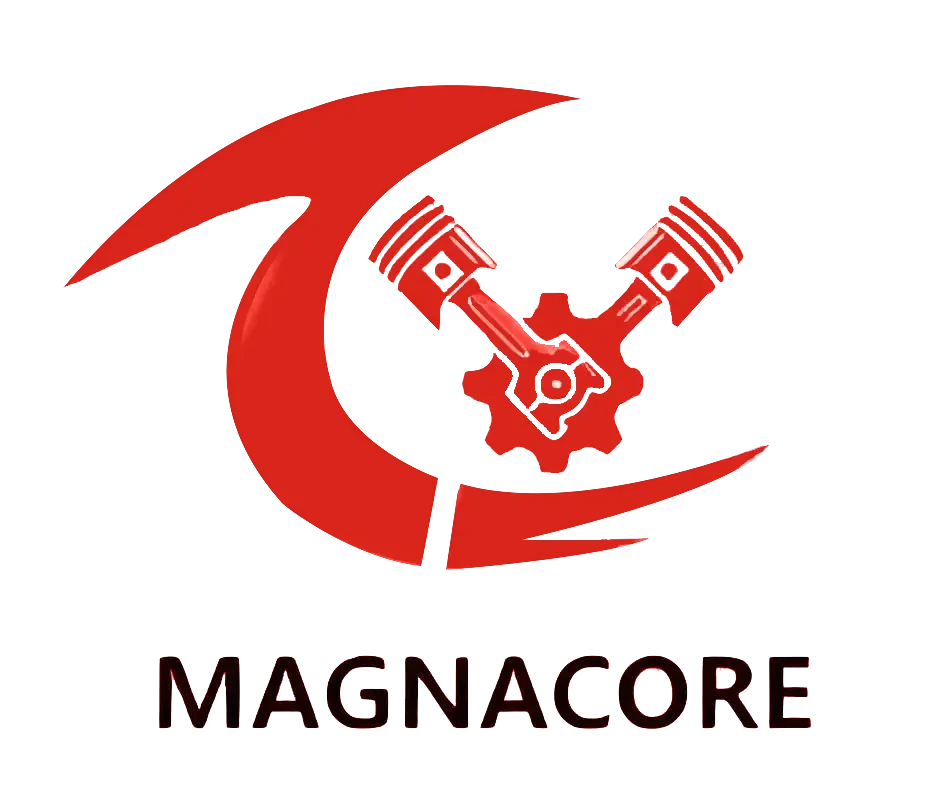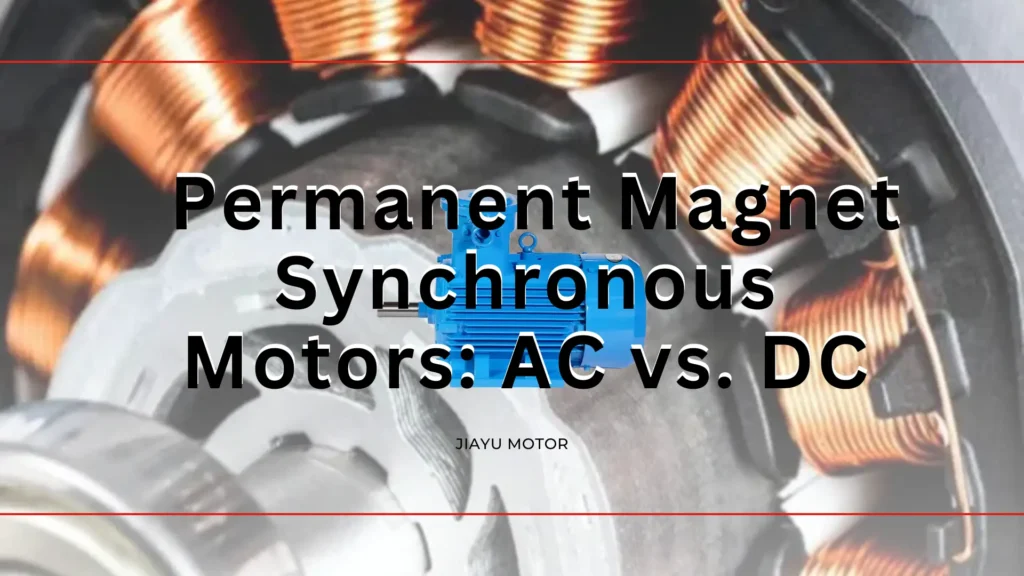Permanent Magnet Synchronous Motors (PMSMs) are defined as electric motors that rely on permanent magnets embedded in the rotor for generating a magnetic field.
PMSMs rotate in accordance with the supply current frequency, which means that the rotor runs with the speed of the magnetic field produced by the stator.
This very particular feature ensures a high degree of control over both speed and torque, making PMSMs very versatile for a number of applications.
Solid Application of PMSMs in Space-High Endurance, Reliability, and Efficiency, to mention a few, are fast becoming a major necessity in modern technology.
Some application fields are automobile, industrial, and renewable energy. In all, PMSMs serve their purpose best by delivering top performance at minimal energy consumption, making them an indispensable part of the transition process towards sustainable technologies.
The operation of a PMSM is based on the coupling between the field of the stator and the permanent magnets of the rotor.
When alternating current is applied to the stator, a rotating magnetic field is produced inside it.
Its field interacts with that of the rotor magnets and causes the rotor to rotate.
This synchronous characteristic makes the rotor run at a constant speed proportional to the frequency of the AC supply.
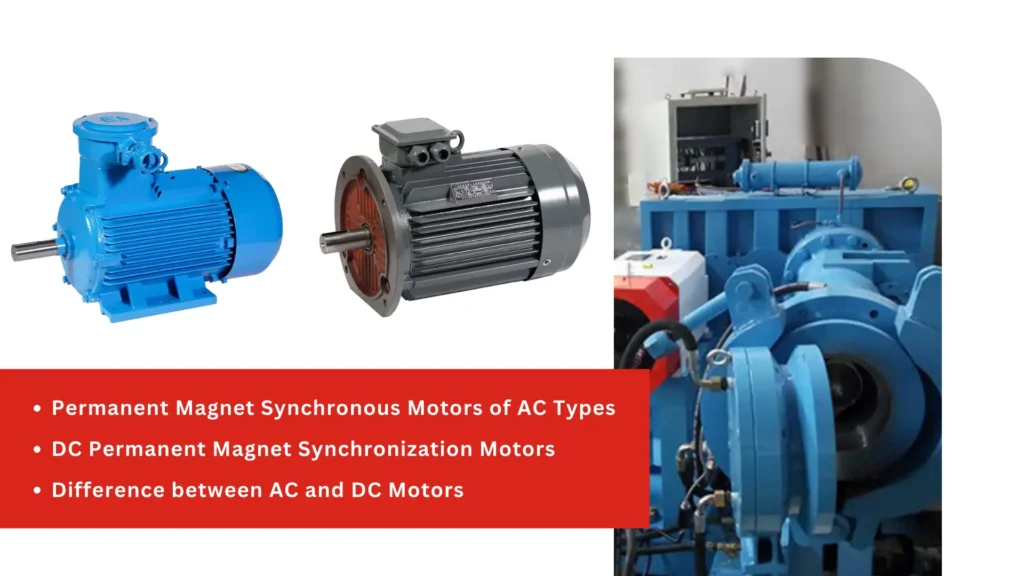
What are the Different Types of Permanent Magnet Synchronous Motors?
Permanent Magnet Synchronous Motors of AC Types
AC PMSMs are operated using alternative currents.
Most cases are generally applied in high-speed and critically precise speed-controlled applications.
However, surface-mounted and interior type permanent magnet synchronous motors offer different performance characteristics.
DC Permanent Magnet Synchronization Motors
Among other associated dc motors, few are dedicated to employing the uses of permanent magnets.
Conventional examples are direct current permanent magnet synchronous motors (dc PMSMs).
Unlike most other permanent magnet synchronous motors, they differ from ac PMSMs only in the use of direct currents.
A greater simplicity in construction and control is entailed in employing dc power, which finds diverse applications contrary to the restricted applicability of ac and dc PMSMs.
It could be electronics, consumer appliances, and sometimes robotics.
Difference between AC and DC Motors
AC and DC PMSMs differ from each other because they operate on different sources of power and function differently during operations; while AC motor excels on efficiency, torque-without mass ratio, and constant speed irrespective of load conditions, because of its simple controls, DC motors make it to have high starting torque whereby they are used for particular applications only.
How do AC Permanent Magnet Synchronous Motors Work?
Structure and Components
The two main parts of the AC PMSMs are stator and rotor. Applying AC voltage to the windings of stator creates rotating magnetic field.
The rotor is embedded with permanent magnets which follows the movement of this magnetic field, hence synchronous operation.
Role of Magnetic Fields
The interaction of the rotor and stator with regards to the rotating magnetic field in stator is important in terms of the development of torque, which will spin the rotor.
The forces is claimed to be strong effects of magnetic fields and thereby influence the efficiency and performance of the motor.
Control Systems for AC Motors
Most advanced control systems such as field oriented control (FOC) are used for the improvement of performance of AC-PMSM.
It is a technique where the speed and torque of the motor can be accurately controlled by manipulating the voltage and current input to the stator windings at various operating conditions in order to maximize efficiency.
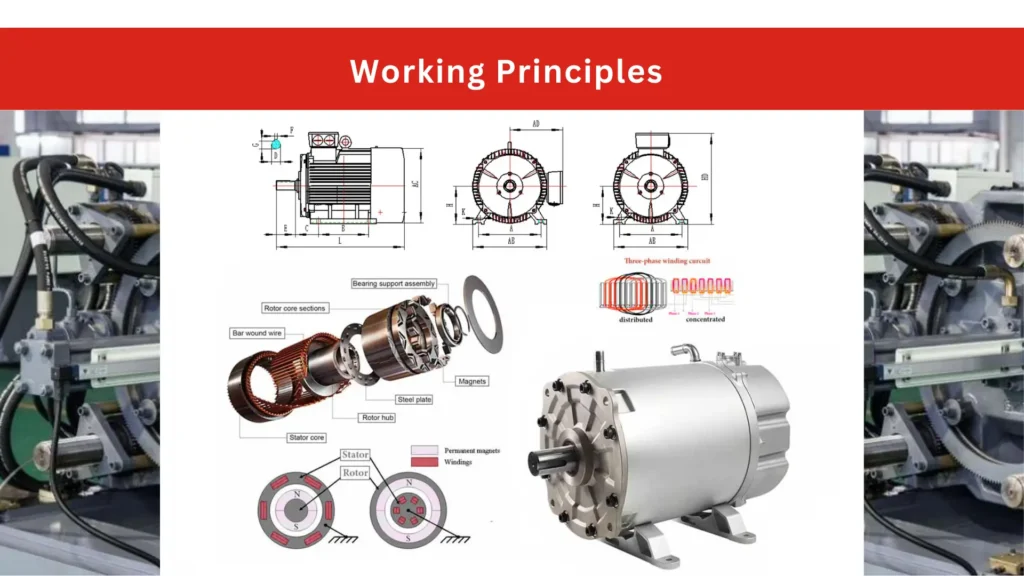
What are the Working Principles of DC Permanent Magnet Synchronous Motors?
Structure and Components
The general structure of an electric motor does not change; it has a stator and rotor that are simpler in construction in DC PMSMs.
The stator generally has windings within which magnetic fields are produced when current flows through the windings.
The rotor has permanent magnets that interact with the produced magnetic fields to create motion.
Role of Magnetic Fields
In a DC PMSM, the torque is produced by the combined action of the stator and rotor magnetic fields.
The direction of the current can be easily changed to alter that of the rotor’s movement, enabling simple operation and control.
DC Motor Control Techniques
DC PMSMs are controlled as simple electronic circuits, for example using pulse-width modulation (PWM) controllers. Such systems allow alteration in the speed and torque of the motor while being considered suitable for applications that require fast speed or direction changes.
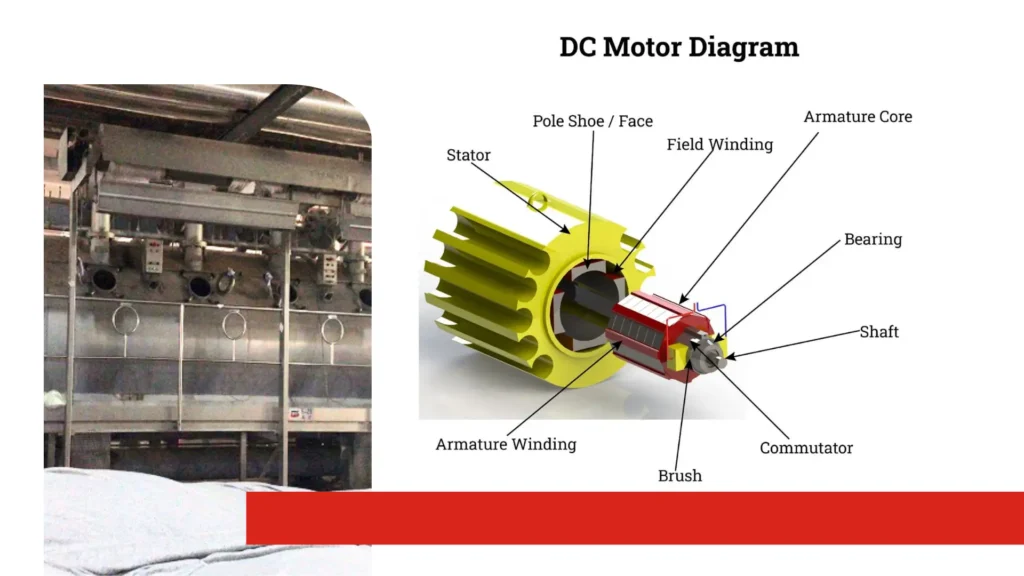
What are the Advantages of Permanent Magnet Synchronous Motors?
Impressive Efficiency
Impressive PMSMs are well known for their efficiency; the conversion of most electrical energy into its mechanical form usually exceeds that of most other types of motors.
Therefore, it not only helps in paying less on fuel but also does not generate excessive heat, making it an appropriate application for long-term use.
Compact Design
PMSM as well, they are considerably smaller and lighter than equivalent motors using electromagnetic windings.
Added to this, the use of magnets makes the design very compact, very useful for applications that have space constraints, such as in electric vehicles or robotics.
Minimum Maintenance Needs
This is because of the fact that PMSMs have a few moving parts and do not use brushes for their operation; therefore, they require less maintenance compared to other types of motors.
This makes them durable and less expensive during their lifetime as downtime and maintenance costs for users are considerably reduced.
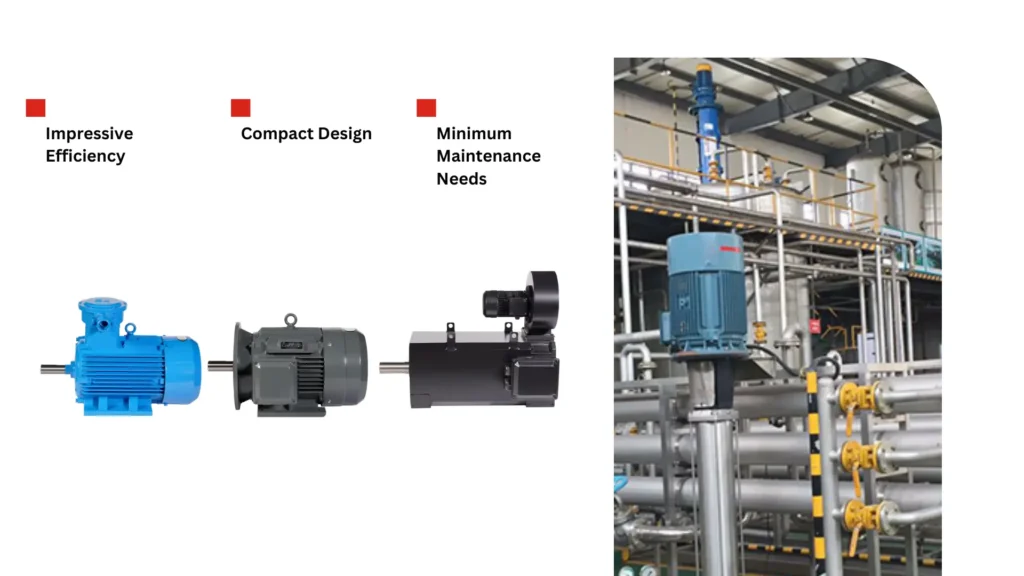
In What Applications are Permanent Magnet Synchronous Motors Used?
Industrial Automation
Applications of PMSMs in industries include precise control along with high reliability, thus suitable for loads subjected to variable loading conditions such as conveyor belts, robotic arms, and machines that do not behave consistently.
Electric Vehicles
Permanent magnet synchronous motors assume a very valuable role for electric vehicles (EVs) in the automotive sector.
They operate so efficiently and compactly that they tend to obtain better performance, consumption, and battery life in modern designs of electric vehicles.
Renewable Energy Systems
Now, for wind turbines and solar inverters, these have become the most important applications in renewable energy systems because it allows efficient operation because of the variation in speed and load to use renewable energy efficiently.
Also Read:
Understanding Permanent Magnet Motors: Applications of AC and DC
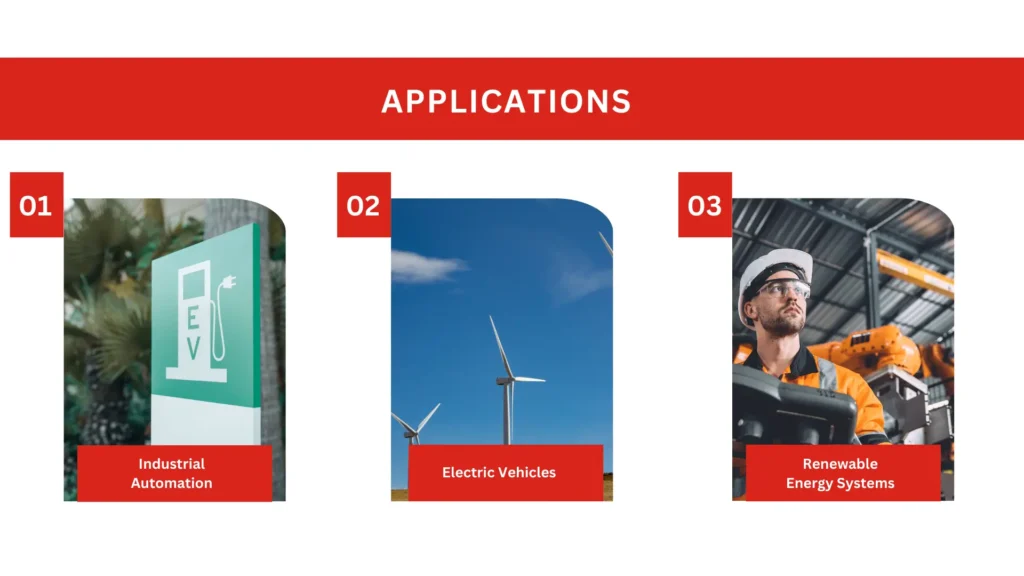
How do AC and DC Permanent Magnet Synchronous Motors Compare?
Performance Metrics
Several performance metrics are relevant when comparing AC and DC PMSM motors. These include efficiency, torque and speed control.
Generally, AC motors are superior in terms of efficiency and speed stability while DC motors will usually have better starting torque and simpler control.
Cost Considerations
The cost is one of the factors that play an important role in deciding between AC and DC PMSMs.
Often, the initial cost of AC motors is to larger extent because of their complex control systems when actually considered over the longer term through performance efficiency thereby offsetting these earlier costs.
DC motors, on the contrary, are less expensive upon purchase and yet would lead to cost-intensive operations owing to energy consumption.
Suitability for Specific Applications
The choice between AC and DC PMSM depends very much upon the application requirements. AC motors would be preferred for applications which demand high efficiency and constant speed, while DC motors would be suited to conditions requiring rapid speed changes and higher starting torque.
And More:
A Comparison of Permanent Magnet AC and DC Motors
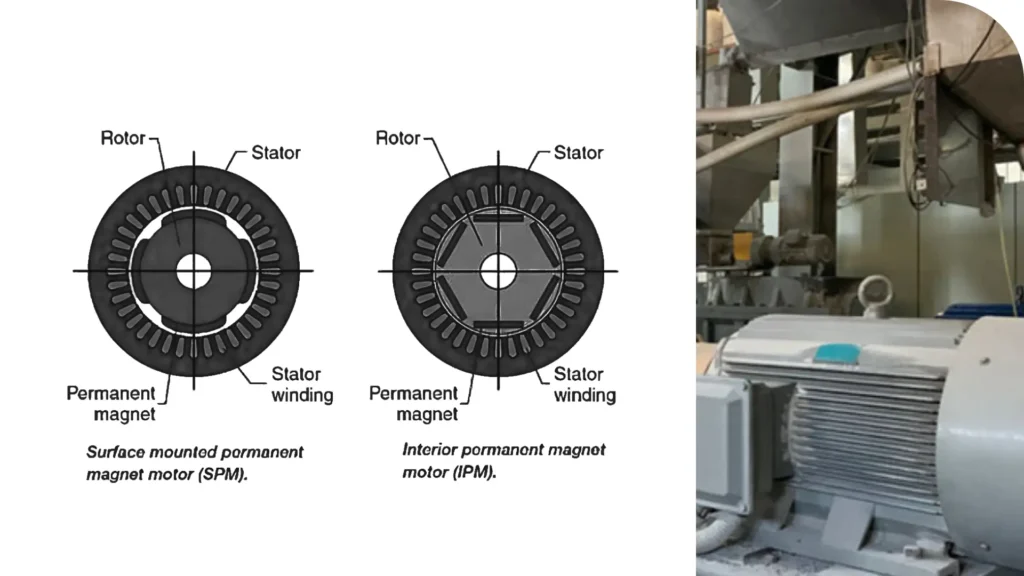
What Is the Lifespan of a Permanent Magnet Synchronous Motor?
Average Lifespan
The lifespan of a PMSM is dependent on many factors such as design, operational conditions, and maintenance practices, and these motors last generally from 15 to 20 years, high-quality models can last even longer.
Important Lifespan Variables
Lifespan for PMSM is determined by several factors such as the quality of the materials used, the environment within which it operates, and the load conditions under which it works.
Motors that are used in very harsh environments or very heavy loads are often subject to wear and tear faster than are motors which are operated in controlled environments.
Correct Usage
To allow the maximum possible life for a PMSM, it should be operated within parameters specified.
Avoiding overload and maintaining temperatures within the limits can greatly increase the entire service life of the motor.
What Are the Maintenance Requirements for PMSM Motors?
Routine Maintenance
PMSMs require very little maintenance relative to other motor types as they have no brushes or commutators.
Checks should apply electrical connections, temperature measurement, and the cleanliness of the motor’s environment with respect to dust and other debris.
Lubrication Needs
Lubrication may not be very extensive for PMSMs, but the bearings indeed should be checked and verified periodically.
In the event, therefore, that the bearings are installed in a motor, they need to be lubricated as per the specific instruction of the manufacturer.
Monitoring Performance
Generally, continuous performance monitoring helps in detecting problems at a much earlier stage in their development.
Keeping track of parameters like the vibration, noise and operating temperature indicates that good performance conditions are being sustained.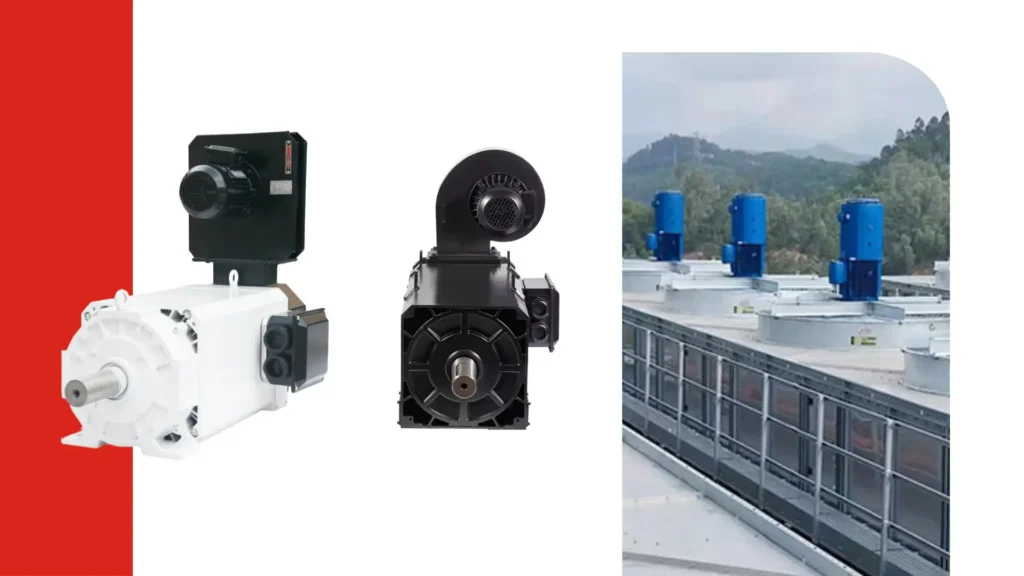
What Is the Temperature Range for Operating a PMSM Motor?
PMSM Operating Temperature
Under normal conditions, PMSMs operate in the temperature range of -20 to 40 degrees Celsius.
Any product of these appliance models offers varieties that can perform under other extreme temperatures, designed for certain application requirements.
Effect of Temperature on Performance
Running a PMSM outside the normal temperature range specified will either reduce the efficiency of the PM synchronous motor, reduce performance, or cause damage to its components.
When subjected to high temperature conditions, the motor insulation of PM synchronous motors could break down damage permanently, while under low temperature conditions, torque output from the motor might degrade.
Cooling Solutions
In various applications, particularly at high demand, are possible cooling system technologies such as fans or heat sinks employed to maintain performance.
Effective thermal management is essential for the motor to ensure operation within the safe temperature limits.
Are PMSM Motors Used in HVAC Systems?
Applications in HVAC
Currently, Permanent Magnet Synchronous Motors are widely in usage with Heating, Ventilation, and Air Conditioning (HVAC systems) because of their efficiency and precise driving of fans, compressors, and pumps.
Benefits of HVAC Applications
PMSMs in HVAC save energy and also enhance system performance; it adjusts the speed of the machine according to demand, thus consuming less energy and reducing operating costs.
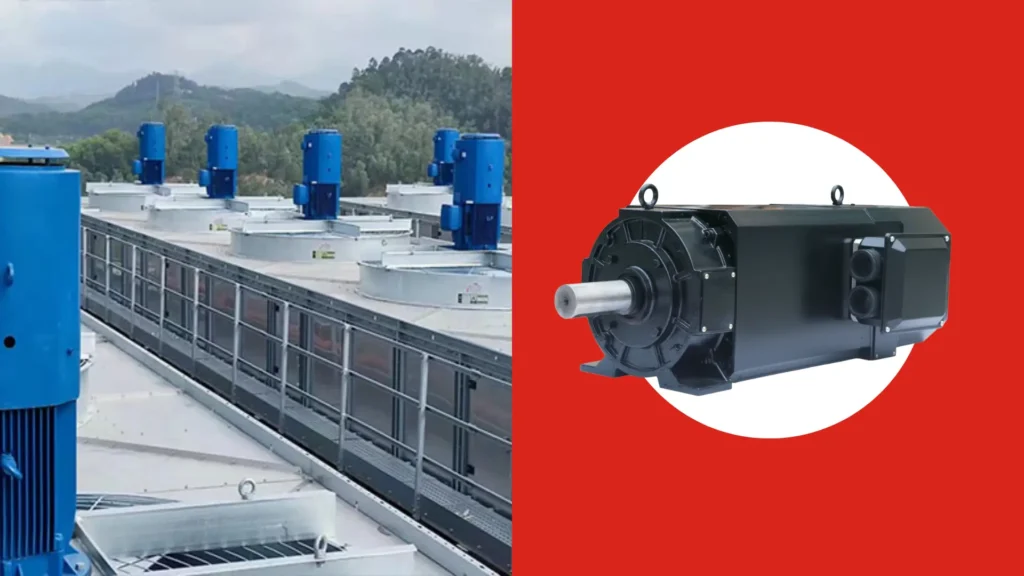
Conclusion
An enormous technological advance in electric motors is Permanent Magnet Synchronous Motors.
Characterized by their high efficiency, compactness, and low-maintenance, the motors are suited for diverse applications from industrial automation to electric vehicles.
When choosing a motor for a specific application, it is imperative to consider multiple factors which may be efficiency, cost, or operational requirements.
The difference between AC and DC PMSM would help the reader to make the appropriate decision that meets the goals for the project.
Technology advances continuously and research on PMSMs would yield more applications in the future.
Thus, it is imperative that users and industries keep abreast on the advancements in this area to optimally gain from these new motors.
